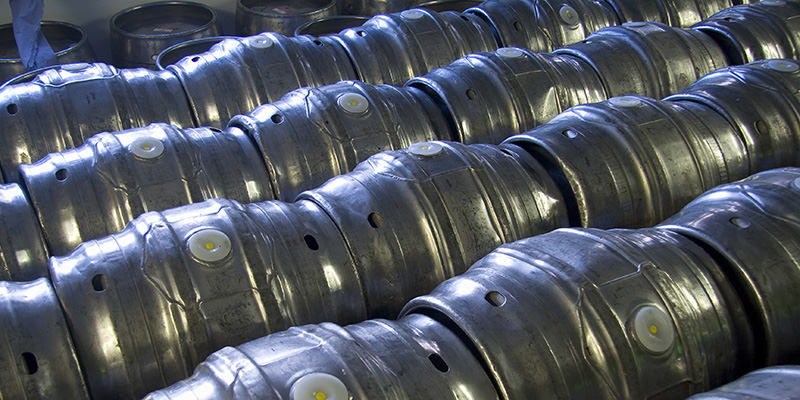You think you’ve been drinking real beer? No, that’s not the name of some Fox follow-up to the end of the American Idol era. It’s an earnest question, which we pose on behalf of (and in total trepidation of) beer geeks everywhere.
“Real beer,” aka Cask Beer or really Cask Ale, is something you’ve probably seen written in chalk on the bottom of a bar menu (assuming you have a craft beer-ish bar within near proximity). And since craft beer is mercifully nationwide, there’s a good chance most of us have some such establishment nearby. Meaning we can go there, stare at the “cask ale” offering, and end up ordering a bottled double IPA because we’re terrified of the tiny chalk letters.
Like some triumphant, boozed up knight, we’re here to tell you: when you see “cask ale,” fear not! (And then fall off our horse.) Cask ale is nothing more than a rare, time-stamped offering that is almost always worth trying (assuming you like the beer style in the cask). Here’s our elevator pitch to keep you from general cask avoidance: Number one: it’s special. Not because of some high price point or weird ingredient; it’s special because it’s going to spoil. Unlike kegged beer, cask beer is racked, or pumped into the cask, with a bit of air coming into contact (not forced CO2). That means, yes, there is oxygen gently fondling your precious booze, and unless it’s some super high ABV beer, that means it has an expiration date. Which is to say, totally Gollum-style, it’s precious.
Why? For one, because the oxygen can play with the flavors a bit, and ideally, enrich them, but certainly give them and the quality of the beer a definite half-life. But moreso because cask ale is typically rerferred to as “alive” (not Frankenstein-style); it simply contains live, active yeast still doing their thing. Which is why, unlike kegged beer, cask ale (the UK is where it’s called “real ale,” and they even have a campaign for it) gets its effervescence mostly from a secondary fermentation (aka “conditioning”) within the cask itself. And that fermentation generally takes place in the pub or bar itself (a bar will receive a cask and allow it to undergo that secondary fermentation, so it can be served at the precise right, tick-tick-tick moment). Also unlike kegged beer, cask ale is both unpasteurized and unfiltered, which means more “muck” (in the good sense) to swim around and develop flavor. Don’t fear, that muck settles by the time the beer is tapped (at the bar), and all you’re left with is complex, if fleeting, flavor.
Cask ale is kind of special, even in a craft beer realm of “everything is unique and special,” because it’s basically beer from an old timey stance, nothing that Budweiser could ever approach. Cask ale is pumped into the cask with “finings”—stuff that can help clarify the beer. There might also be a little bit of sugar to goose that secondary fermentation (think Champagne) that’ll help the beer gain a little bit of carbonation, meaning you’ll have yeast sediment at the bottom of the cask, once more enriching the flavor. Unlike over-carbonated beers, you won’t have forced bubbles to enhance/interrupt/pitch-hit for flavor in cask ale. And, finishing touch, cask ale is best served hand-pumped. Do with that statement what you will, but it means good beer.
And by “good beer,” we mean incredibly fresh, unlike anything you can get in even the best craft beer store. Not to mention, lighter in bubbles, slightly higher in cost, and almost always much richer in flavor. Beer worth buying, if you see the words “cask” scrawled (terrifyingly, lovingly) at the bottom of a bar menu.
PS – Just in case you’re used to tapping the Rockies, cask ales are generally served just a smidge below room temperature. Not warm, but not nearly as frigid as the macro lager we chug before and/or after our favorite sports squadrons win or lose.

